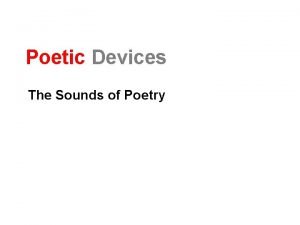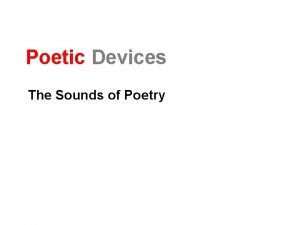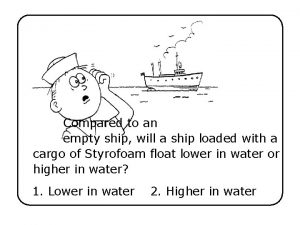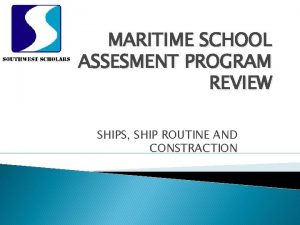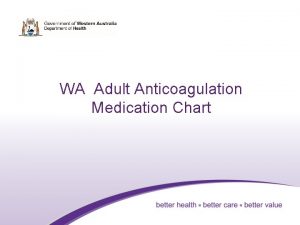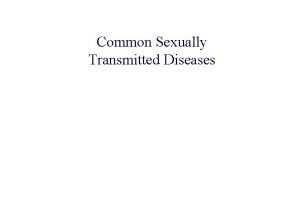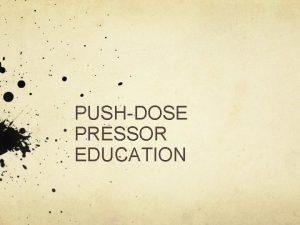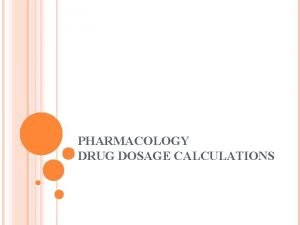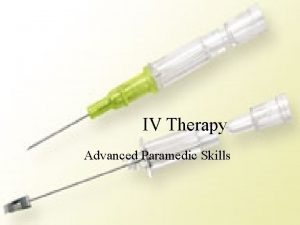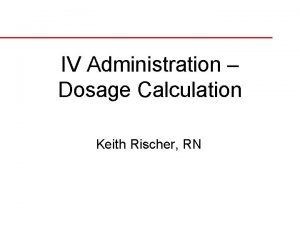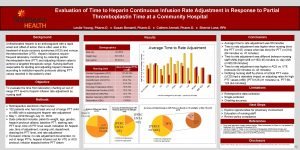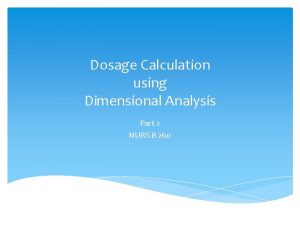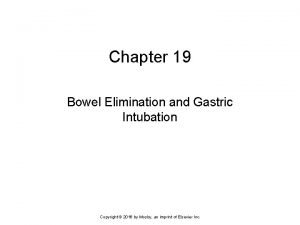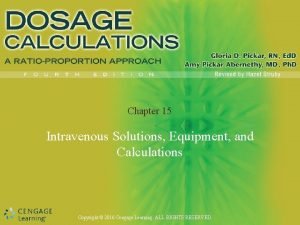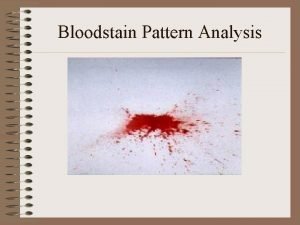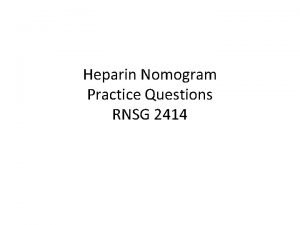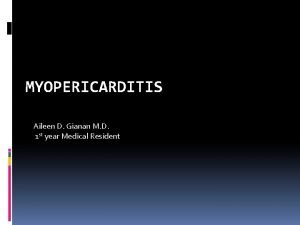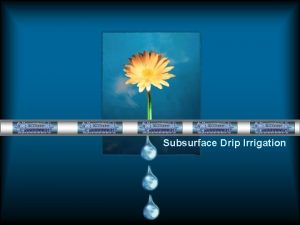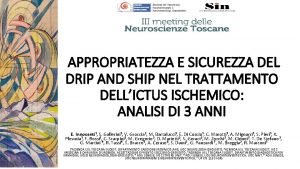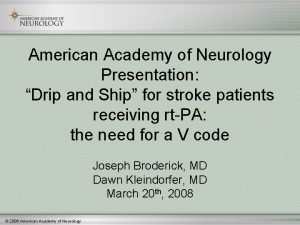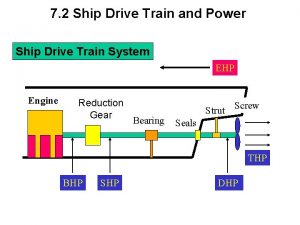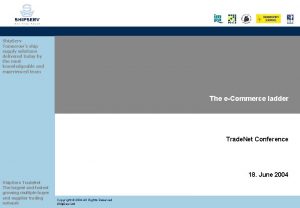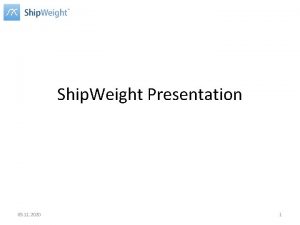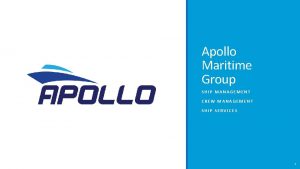MOTHERSHIP vs DRIP and SHIP SYMTAS 310518 SANTIAGO
























- Slides: 24

MOTHERSHIP vs DRIP and SHIP SYMTAS 31/05/18 SANTIAGO DE COMPOSTELLA

• • • Prehospital LVO stroke recognition Transfer protocols Intrahospital delay : CSC workflow metrics Mothership = Bypass PSC Drip and ship optimization Regional EV Capable stroke centers

DRIP AND SHIP TRIP AND TREAT BYPASS PSC

Transfer Delay in Acute Ischemic Stroke Prabhakaran et al Stroke 2011 The odds of emergent angiography decreased by 3% (unadjusted OR, 0. 970) per minute of delay beyond 46 minutes In a multivariable logistic regression model prolonged transfer time remained negatively associated with emergent angiography embolectomy

Transfer related Morbidity/Mortality • In IMS III, the odds of a good clinical outcome (modified Rankin Scale score ≤ 2) for subjects treated under the drip and ship paradigm are less than the odds for subjects treated under the mother-ship paradigm (odds ratio, 0. 56; 95% confidence interval, 0. 31– 0. 99; P=0. 045). Goyal et al. Circulation 2014 • Hospital transfer associated with increased mortality Rinaldo et al JNIS 2016

Hospital transfer associated mortality Rinaldo et al. JNIS 2016 National database: reported outcomes of 8533 inpatient admissions for EVT of AIS On multivariate analysis, distance remained associated with death after adjustment for patient age, NIHSS , basilar occlusion, administration IV t-PA, time to intervention, TICI 2 b/3 reperfusion grades

Figure 3: Patient Transfer Type Goyal et al. Radiology 2016 A Onset to ED Mothership n=126 65 17. 5 10 37 23 24 7 ED to Imaging Start to Qualifying to Randomization Drip and ship n= 66 214. 5 14 7 22. 5 17 23. 5 9 Randomization to Puncture * Puncture to Deployment 0 B 50 100 150 200 250 300 Deployment to Reperfusion Minutes (Median) Patients who initially arrived at a referring facility had longer symptom onset to groin puncture times compared with patients who presented directly to the endovascular-capable center (275 vs 179. 5 minutes, P , . 001). Revascularization within 2. 5 hours of symptom onset was associated with functional independence (minimal or no disability) in 91% of patients. Likelihood of functional independence was 10% higher in patients treated within 2. 5 hours compared with patients treated between 2. 5 and 3. 5 hours after stroke onset.

Major emphasis on speed of treatment • MR CLEAN showed a 7% decreased probability of good outcome for each hour delay in revascularization. For patients revascularized within 2 hours of stroke onset, the absolute difference in good outcomes between the endovascular and control groups was 33%, decreasing to 6. 5% at 6 hours. Time to reperfusion and treatment effect for acute ischemic stroke: a randomized clinical trial. Fransen et al. JAMA Neurol 2016; 73: 190– 6. 26/10/2020 STROKE LAB 2018 8

From: Two Paradigms for Endovascular Thrombectomy After Intravenous Thrombolysis for Acute Ischemic Stroke JAMA Neurol. 2017; 74(5): 549 -556. doi: 10. 1001/jamaneurol. 2016. 5823

Mothership : Bypass PSC – Clinical outcomes were better in the direct group with 60. 0% (299/498) achieving functional independence, compared to 52. 2% (213/408) in the transfer group (odds ratio 1. 38, 95%CI 1. 06 -1. 79; p=0. 02). – Likewise, excellent outcome (modified Rankin Score 0 -1) was achieved in 47. 4% (236/498) of direct patients vs. 38. 0% (155/408) of transfer patients (odds ratio 1. 47, 95%CI 1. 13 -1. 92; p=0. 005). – Mortality did not differ between the two groups (15. 1% for direct, 13. 7% for transfer; p=0. 55). IV-t. PA did not impact outcomes. Interhospital Transfer Prior to Thrombectomy is Associated with Delayed Treatment and Worse Outcome in the STRATIS Registry. Froehler et al Circulation 2017 26/10/2020 STROKE LAB 2018 10

Mothership : Bypass PSC • Hypothetical bypass modeling for all transferred patients suggested that IV-t. PA would be delayed by 12 minutes but MT would be performed 91 minutes sooner if patients were routed directly to endovascular-capable centers. • If bypass is limited to a 20 -mile radius from onset, then IV-t. PA would be delayed by 7 minutes and MT performed 94 minutes earlier. (FROELHER Circulation 2017) Interhospital Transfer Prior to Thrombectomy is Associated with Delayed Treatment and Worse Outcome in the STRATIS Registry. Froehler et al Circulation 2017 26/10/2020 STROKE LAB 2018 11

CLINICAL IMPLICATIONS • The American Stroke Association recommends that Emergency Medical Service bypass acute stroke–ready hospital (ASRH)/primary stroke center (PSC) for comprehensive stroke centers (CSCs) when transporting appropriate stroke patients, if the additional travel time is ≤ 15 minutes. However, data on additional transport time and the effect on hospital census remain unknown. In an urban based population study 85% stroke cases would have <15 minutes added transport time to CSC compared to PSC (Stroke. 2017; 48: 2164 -2170) Limiting triage to the CSC to patients with National Institutes of Health Stroke Scale score of ≥ 10 within 6 hours of onset would have added 116 patients (2. 2 per week) to the CSC’s annual census.

Reducing time intervals in metropolitan areas Deconstruction of interhospital worflow Ng eta al Stroke 2017 – Door in-door out (DIDO) at PSC : The longest component of DIDO was CT-to-retrieval request (56. 1% of DIDO) where tasks performed include imaging acquisition, reconstruction, and interpretation – interhospital transfers(D 2 D) exceed 2 hours even in highvolume PSCs in the evidence-based thrombectomy era 26/10/2020 STROKE LAB 2018 15

EFFICIENT DELIVERY Bypass PSC if CSC in a radius of 20 miles • Patients with suspected ELVO primarily transported to non -endovascular-capable centers owing to large transport Transfer if PSC is able to achieve DIDO<40 minutes time differences or clinical instability should undergo P 2 P <90 minutes expeditious evaluation and treatment, including noncontrast head CT, possible vessel imaging immediately Unless increase the number of CSC upon arrival, and administration of IV t-PA (if eligible). • Vessel imaging should not delay patient transfer. Rapid transfer to a comprehensive center with endovascular capability to minimize interhospital transfer delays is a priority. • A metric proposed to assess transfer processes is the picture to puncture (P 2 P) time. A P 2 Pof <90 min should be a goal. (AHA class I, level of evidence C) Standarts and guidelines from SNIS Pride et al. J Neuro. Intervent Surg 2017; 9: 802– 812 26/10/2020 STROKE LAB 2018 16

Geographic differences in acute stroke care in Catalunya: impact of a regional interhospital network. Ribo et al. Cerebrovascular diseases 26: 284 -288, 2008 An interhospital network based on transfers to CSC does not warrant geographical equity: equal access to best therapeutic Interventions is only partially achieved at the expense of a high proportion of unecessary transfers. 26/10/2020 Access to Endovascular Treatment in Remote Areas: Analysis of the Reperfusion Treatment Registry of Catalonia. Perez de la Ossa, Natalia; STROKE LAB 2018 Stroke. 47(5): 1381 -1384, May 2016. 18

26/10/2020 STROKE LAB 2018 19

Interfascility MT Acessibility(within 6 h) for distant PSC patients. A 3 year prospective registry analysis Causes of futile transfer, n 67 (56. 3%) Clinical improvement or reperfusion on MRI 31 (46. 2%) Time out after transfer 16 (23. 9%) Clinical worsening or infarct growth 10 (14. 9%) Protocol deviation 4 (6%) Randomization in the medical treatment arm 2 (3%) Transfer due to expected worsening 2 (3%) Other 2 (3% ) Thrombectomy accessibility after transfer from a primary stroke center: STROKE LAB 2018 Analysis of a three-year prospective registry. Sablot et al. IJS 2017; 12: 519 -523 26/10/2020 21

Thrombectomy accessibility after transfer from a primary stroke center: 26/10/2020 STROKE LAB 2018 Analysis of a three-year prospective registry. Sablot et al. IJS 2017 ; 12: 519 -523 23

24. 2% of initially eligible patients became ineligible after transfer due to infarct progression 26/10/2020 STROKE LAB 2018 24


Reasons for the futile transfer. Blanca Fuentes et al. Stroke. 2015; 46: 2156 -2161 Copyright © American Heart Association, Inc. All rights reserved.

Drip and Ship Versus Direct to Comprehensive Stroke Center Conditional Probability Modeling Holodinsky et al Stroke. 2017; 48: 233 -238 Theoretical models were built on recanalization rate of 74% for EVT and 18% for IVT in case of a transfer time superior to 45 minutes between the PSC and the CSC, if the patient is close to a PSC, DS paradigm is better than MS

Regional Distribution of CSC • Equity, Access, Address geographical differences • We can’t ignore Transfer related mortality • Requirements – Less PSC and more CSC, with large volumes of patients with AIS and endovascular capability – Stroke volume () – Site accreditation – Physician certification Davis et al. Stroke 2017. 48: 2042 -2044

EVT Capability Must Expand Beyond Our CSC Training Centers • Is it better for a patient to be treated in regional hospital stroke centers covered by a VNs who does EVT than to take the extra ≥ 2 hours required for transfer to a CSC? • EVT can be provided at regional stroke centers by VNs who are appropriately trained and who have created a team of nurses, anesthesiologists, technologists, radiologists, and stroke unit personnel to take care of the patient. • although thorough and expert training in all aspect of neurovascular intervention is required, we suggest that it might not be necessary that all VNs carrying out EVT outside of CSCs maintain skills to treat aneurysms, AVMs and other non-ET cases • (Stroke. 2017; 48: 2313 -2317)
 Onomatopoeia poetic device
Onomatopoeia poetic device Drip-hiss-drip-hiss fall the raindrops meaning
Drip-hiss-drip-hiss fall the raindrops meaning Difference between empty ship and loaded ship
Difference between empty ship and loaded ship Flounder plate ship
Flounder plate ship Heparin drip protocol
Heparin drip protocol Std
Std Epi drip dose
Epi drip dose Belpper
Belpper 250 lbs to kg
250 lbs to kg Drip rates formula
Drip rates formula Iv fluid calculation microdrops
Iv fluid calculation microdrops Calculate gtts/min
Calculate gtts/min Nalador
Nalador Stitches after birth pictures
Stitches after birth pictures Heparin infusion protocol
Heparin infusion protocol Stock dose formula
Stock dose formula How to calculate mcg/kg/min using dimensional analysis
How to calculate mcg/kg/min using dimensional analysis Elimination and gastric intubation
Elimination and gastric intubation How to calculate drip factor
How to calculate drip factor Drip trail pattern definition
Drip trail pattern definition Dagmar model
Dagmar model Ptt nomogram
Ptt nomogram Bamboo drip irrigation system in meghalaya
Bamboo drip irrigation system in meghalaya Sugarcane drip irrigation
Sugarcane drip irrigation Isoket drip
Isoket drip
